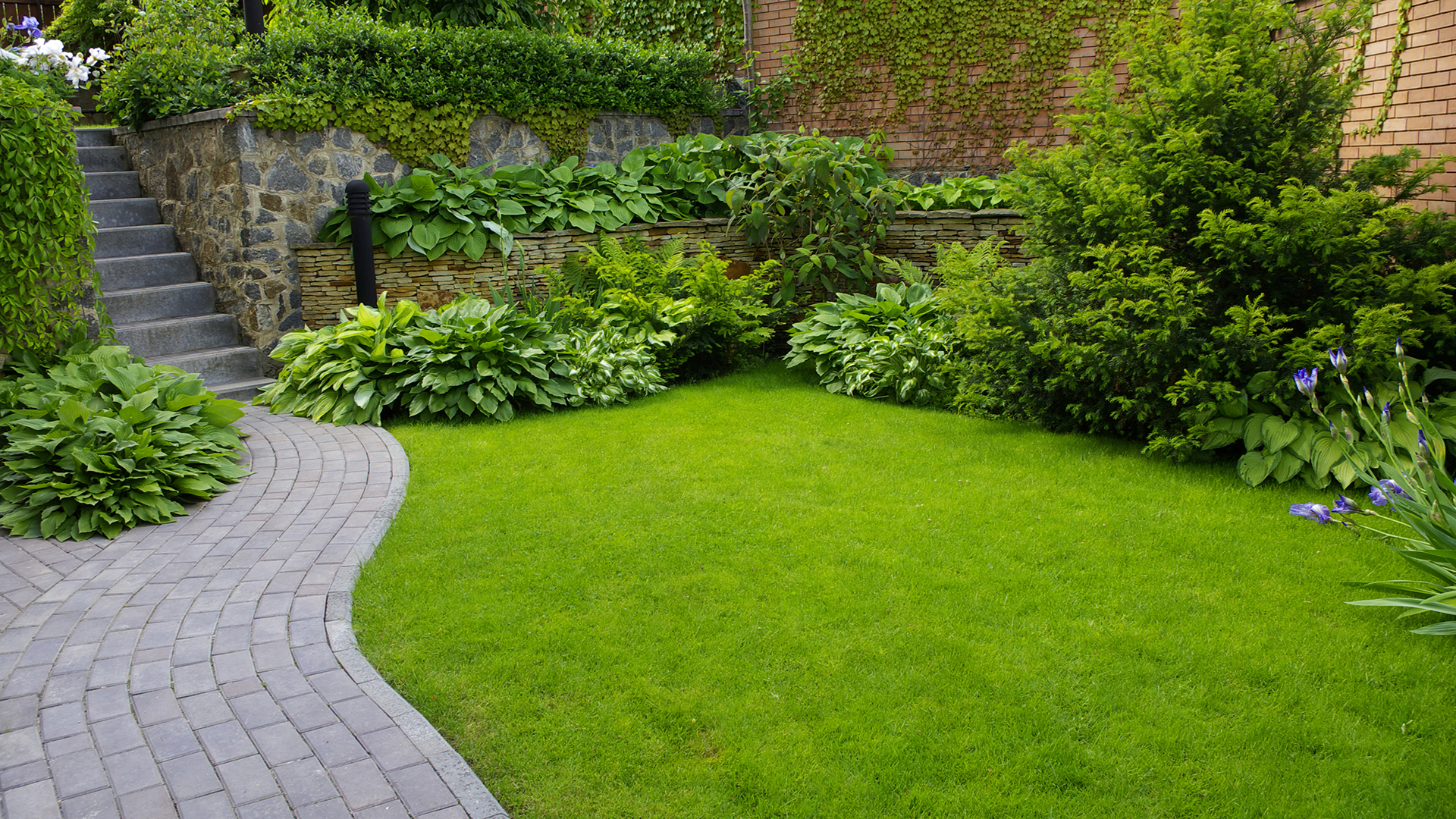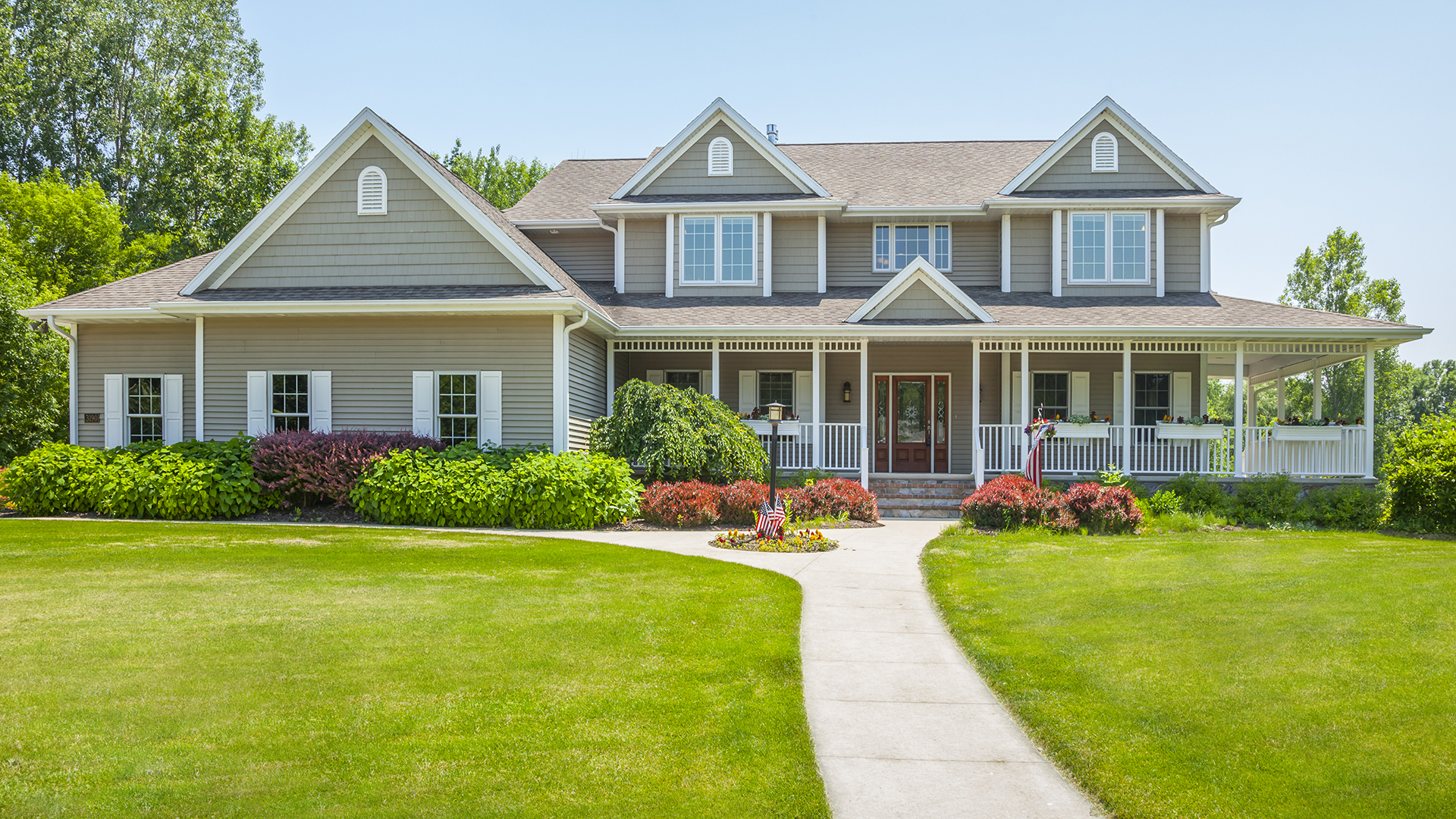We all like a nice flat lawn to look at don’t we? However, if your lawn is flat, it may not allow for water to drain off. This means that you can experience floods and pooling of water - that’s when you need to consider lawn grading.
Expert Sarah James says, "Lawn grading is essential for homes that experience water pooling near the exterior walls as they may lead to bigger damage to your home including foundation problems."
Lawn grading means creating a slight incline in your lawn, which allows for rainwater to run off and not pool in the lawn itself, or near your property, garage or decking.
A lawn that slopes in the wrong direction can also cause issues - allowing water to run off towards any structures and encouraging erosion, damp and mold. This also calls for lawn grading to improve the situation. It can also be used to cure imperfections such as lumps and bumps, giving you a better surface to mow and walk on.
Here we will explain the reasons for lawn grading, as well as how to get the job done - so your lawn still looks great and your property is protected.
While you’re looking at this issue, it’s the perfect time to ensure your lawn is in its best condition, tackling weeds and putting a good mowing schedule in place with one of the best gas lawn mowers or the best electric lawn mowers.
Why should you grade your lawn?
A lawn should have a gradient of about two to three inches every ten feet away from your house. If it doesn’t, or if the lawn slopes the wrong way, water can pool around structures. If you also have a basement, this situation can also make it prone to dampness, making the area unusable.
It’s not only property that is at risk though. If your lawn doesn’t have the correct drainage, it can encourage mold in your grass, and leave it vulnerable to grass diseases. It can also allow borders and shrubberies to get too wet and kill off your precious plants. In warmer areas, pools of water can also be a breeding place for mosquitoes.
When you grade your lawn, you’ll also smooth out any bumps or dips, which will make it much easier to mow, and you will end up with a far more attractive lawn. It also makes it a much nicer play surface.
If you have heavy traffic areas that get compacted, causing ruts and bumps, it may be time to consider putting in a hard landscaped path to prevent the problem.

Sarah Jameson is Marketing Director of Green Building Elements. She has an educational background in Digital Marketing and Construction Management and her expertise lies in green technology and construction practices.
Sarah James says, "One way for homeowners to determine if the property needs proper grading is if they notice the ground in areas around the house is uneven. However, there are a lot of considerations that people must factor in before they actually opt for land grading including underground pipes that could be affected.
It's best to find a professional to inspect the home first before actually deciding if your home is safe for lawn grading. There are alternatives to grading that homeowners can look into such as french drains or a terraced backyard.’’
Lawn grading tips
Step 1:
Get your measurements right. A slope away from your house foundations should be a minimum of two to three inches for every ten feet. The maximum a slope should be is 12 inches for every four feet - otherwise you are at risk of erosion.
Step 2:
Mow the lawn before you start, so you can see what you are dealing with - it will also help you identify any imperfections in the ground.
Step 3:
Measure the existing grade of your lawn by using two stakes, a line level, string and a tape measure. Push one stake into the ground by the property’s foundation and then another 100 inches away. Each time you measure, ensure the distance is the same - this will make your calculations easier.
Tie the string to both stakes making sure it is taut. Push the string on the first stake to ground level and then move the string on the second stake until it is level (using the line level). Then measure the distance from the ground to the string on the second take. Divide that measurement by 100 to get the percentage slope - it should be no less than 2% or more than 25%. If it is less, you will need to dig out some soil, if it is too much you will need to add some soil to decrease the slope.

Step 4:
If your lawn is very large, or you are unable to carry out physical work, you will need to bring in contractors with machinery. However, for a small area that doesn't need too much of a change, it can be a DIY job.
Step 5:
You may need to take measurements at different areas around your house. This is also a good opportunity to level out any lumps and dips. You can do this by mixing up a top-dressing mix of two parts sand, two parts topsoil, and one part compost. For dips, dig out the sod to about two inches, add in the topsoil mix and then replace the sod. It will need a good watering.
It's worth noting that one of the best tillers will be a useful tool to help you dig and break up soil - while a landscaping rake can then be used to help move and level the dirt.
Step 6:
Once the job is done, take your measurement again, to ensure you have completed it correctly.
Now is the time to sow grass seed - not only will that ensure you get your lawn back quicker, but the grass roots will help to bind the looser topsoil and prevent erosion. Make sure you keep your new grass areas well watered. If your lawn has a major slope you may need to consider other options, such as building a retaining wall, to correct the problem.
Discover more guides for the garden…
Best riding lawn mower
Best robot lawn mower
Best patio heaters

